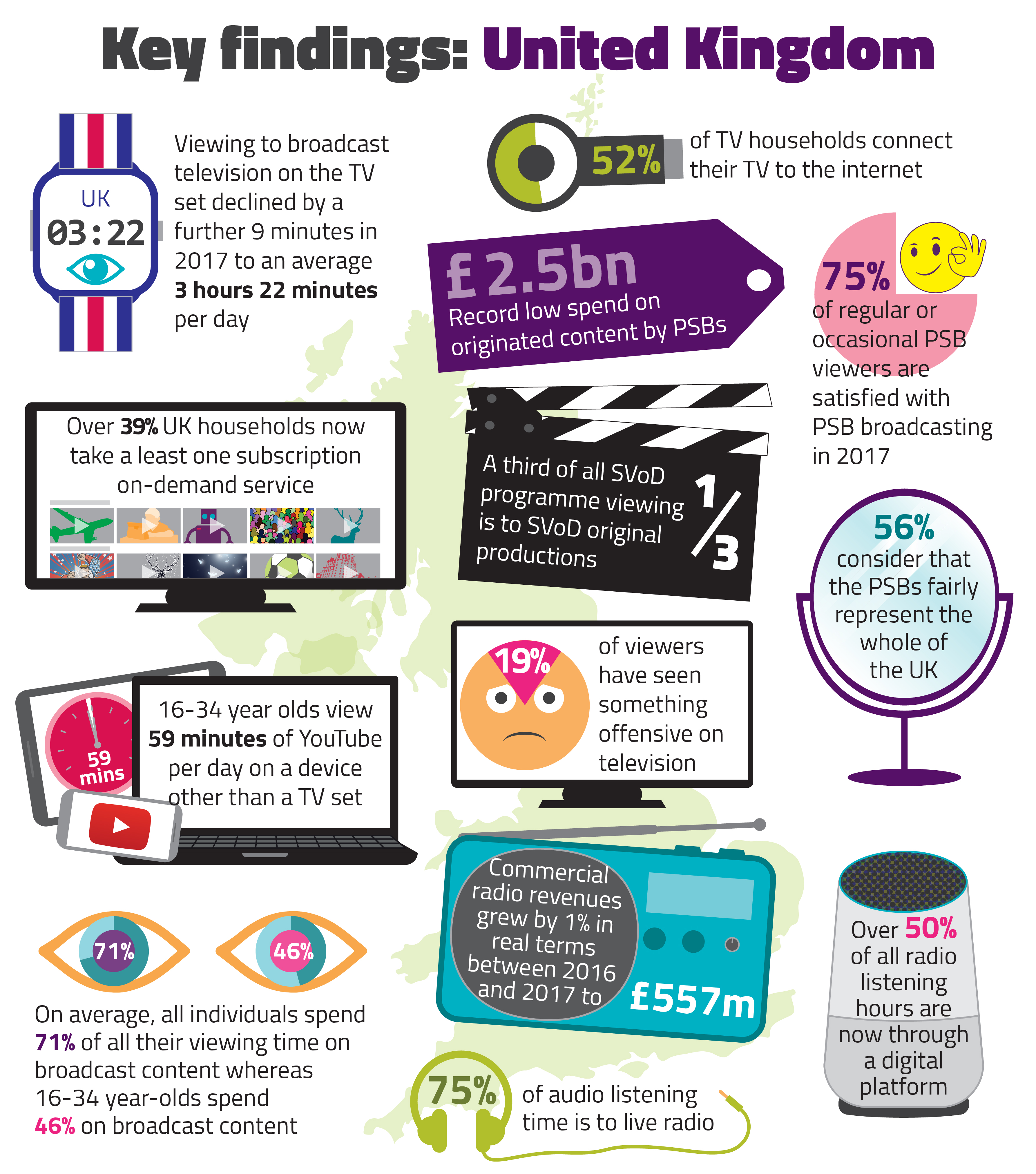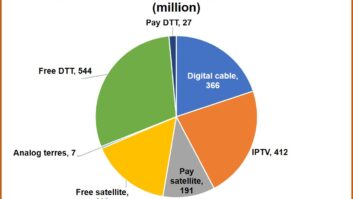Subscribers to the likes of Netflix, Amazon and Now TV have surpassed the number of viewers using pay-TV services in the UK for the first time.
The figure has been revealed in Ofcom’s Media Nations Report. It says SVoD subscriptions reached 15.4 million in Q1 of 2018, compared to pay-TV’s 15.1 million.
The amount of revenue generated from pay-TV has also fallen for the first time.
Spending by the BBC, ITV, Channel 4 and Channel 5, on new UK-made television programmes fell to a 20-year low. At the same time, people are spending less time watching television: average daily broadcast viewing on the television set fell by nine minutes in 2017 – and is down 38 minutes since 2012.
Following a period of sustained growth, the UK’s pay TV providers saw a 2.7 per cent decrease in total revenue last year to £6.4 billion. In contrast, the increasing number of streaming subscriptions contributed to a 28 per cent growth in online audio-visual revenues, to £2.3 billion in 2017. At the same time, television advertising income fell by seven per cent, to £3.9 billion.
The report also details the amount of time UK viewers spend watching broadcast television. In 2017, the figure stood at an average of 3 hours 22 minutes a day, down nine minutes (4.2 per cent) compared to 2016, and 38 minutes (15.7 per cent) since 2012. Among children and viewers aged 16 to 34, declines were steeper, leading to the over-65s watching four times as much broadcast television as children in 2017.

Total daily viewing time across all devices now stands at 5 hours one minute, of which two-thirds (three hours 33 minutes or 71 per cent) was to broadcast content, and 1 hour 28 minutes to non-broadcast content. However, among 16 to 34-year-olds, total daily viewing time in 2017 was 4 hours 48 minutes, of which less than half (two hours 11 minutes or 46 per cent) was to broadcast content, while just under an hour per day was spent watching content on YouTube.
Sharon White, Ofcom’s chief executive, said: “Today’s research finds that what we watch and how we watch it are changing rapidly, which has profound implications for UK television.
“We have seen a decline in revenues for pay TV, a fall in spending on new programmes by our public service broadcasters, and the growth of global video streaming giants. These challenges cannot be underestimated.
“But UK broadcasters have a history of adapting to change. By making the best British programmes and working together to reach people who are turning away from TV, our broadcasters can compete in the digital age.”







